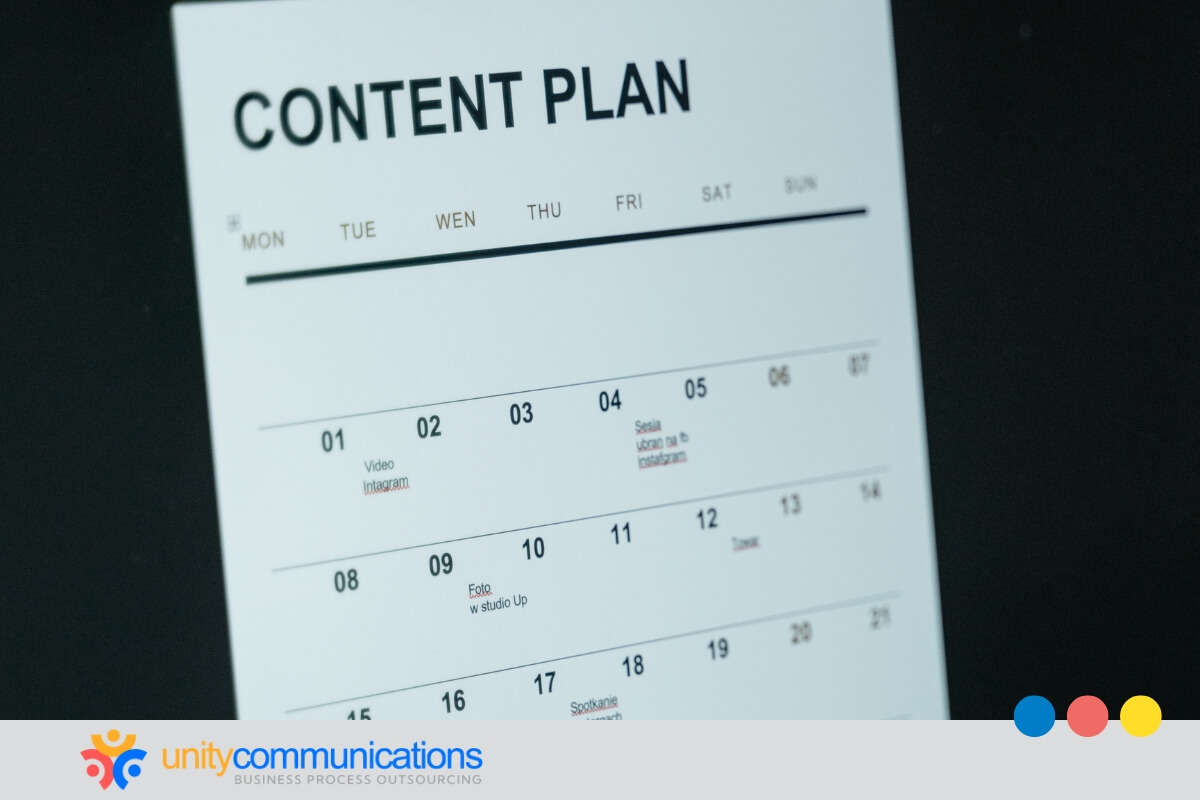Table of Contents
Social media drives brand growth, customer engagement, and revenue for small businesses. However, many still fail to see results due to unrealistic objectives. The solution is strategic and achievable goal setting.
This process creates a roadmap that aligns your content, messaging, and campaigns with meaningful business outcomes. Whether managing accounts in-house or working with a partner offering social media marketing services, clear objectives help businesses stay focused on what matters.
This guide outlines setting achievable social media marketing goals that match your business priorities. Read below to learn how to make Facebook and Instagram work for your brand.
Why clear social media goals matter for small businesses

Social media is a powerful digital marketing tool. As of 2025, more than 90% of local businesses in the U.S. incorporate social media into their marketing strategies, with 77% relying on it to drive revenue. This shows the effectiveness of platforms such as Facebook, Instagram, and TikTok in building brand awareness, engaging customers, and driving sales cost-effectively.
To maximize the benefits, small businesses should set realistic social media marketing goals to focus time and resources on specific, measurable outcomes that drive business growth.
Clear objectives also:
- Guide content planning, platform selection, and engagement tactics.
- Streamline performance evaluation and social media management.
- Provide more actionable insights that improve brand marketing.
- Avoid inconsistent content and missing out on engagement opportunities, such as leveraging trends.
- Efficiently utilize the budget by tailoring strategies to achieve desired results.
Social media marketing goals are also necessary if you want to work with a business process outsourcing company to automate processes, reduce operating and labor costs, and access specialized expertise. Well-defined objectives align them with your expectations and improve collaboration.
With clarity, a highly active social presence can translate to productive business results.
How to set SMART social media goals that work
One practical framework for setting social media marketing goals is SMART: specific, measurable, achievable, relevant, and time-bound. This proven model transforms vague intentions into actionable strategies. Following these five criteria helps you stay focused, track success, and adapt quickly.
Let’s break it down.
- Being specific means clearly defining what you want to achieve. Rather than “We want to grow our presence,” say, “We want to increase our Facebook followers by 20%.”
- Measurable means the goal should have quantifiable results, such as follower count, clicks, or engagement rate. To effectively measure performance, gather insights, refine strategies, and inform decisions.
- Achievable indicates setting reachable objectives based on existing resources to prevent unrealistic expectations that can lead to burnout and frustration. If you currently average 100 likes per post, aiming for 10,000 overnight might be impractical. Instead, focus on incremental growth.
- Relevant social media goals should support your broader business strategy. For example, if you want to increase sales for a specific product, your objective might be to drive traffic to the product page or boost conversions through social ad campaigns.
- Time-bound goals have a clear deadline to keep you accountable and maintain momentum. A timeline such as “within 30 days” or “by the end of Q2” allows you to evaluate progress consistently.
SMART goals apply to every aspect of social media management, from content creation to customer service. For example, your content objective might be to “increase average TikTok views by 25% in 60 days by posting two videos weekly.” Specificity ensures your actions drive results, not just activity.
Defining SMART goals sets the stage for strategic action rather than random activity. Being present on social media becomes more purposeful, helping you build a solid brand.
Align social media goals with business objectives

Many small businesses treat social media as a separate activity. But it should complement their marketing and operations. Aligning goals with sales, service, or hiring ensures that their time and budget deliver real value.
Consider these ideas to ensure your social media marketing goals align directly with your business objectives.
- If increasing foot traffic is a top priority, focus your content on local promotions, event posts, and location tags to drive people into your store.
- Are you launching a new product? Use social media to build momentum with teaser posts, testimonials, and launch-day promos.
- If customer service is vital, prioritize fast response times and highlight positive reviews.
- Seasonal goals also matter. Consider boosting Instagram ads during the holiday season or ramping up Facebook content during busy months.
- Time your social efforts to match business cycles to keep campaigns relevant.
- Want to grow brand awareness? Share stories that reflect your mission, values, and community involvement to humanize your brand.
- To boost website traffic in your posts and stories, add strong calls to action, product links, and swipe-up features.
- Focusing on customer retention? Feature loyalty programs, thank-you posts, and exclusive deals for followers to build deeper relationships.
- To increase engagement, ask questions, create polls, and encourage followers to share their experiences with your brand.
- Do you need to educate your audience? Post tips, how-to videos, and carousel posts explaining the benefits of your product or service.
- To run limited-time offers, use countdown stickers, write urgency-driven captions, and publish paid ads to drive fast action.
Aligning social media marketing goals with broader marketing strategies also facilitates cost-effective scaling. Suppose you need more agents to handle the increased customer inquiries from a new campaign. You can consider outsourcing social media marketing to boost support quickly without increasing overhead or hiring permanent staff.
Ultimately, aligned goals eliminate guesswork and ensure every post or campaign moves your business forward, not just your social metrics.
Choose the right social media KPIs for growth
Key performance indicators (KPIs) indicate whether your social media strategy delivers results. They are especially crucial when exploring how outsourcing works in digital marketing.
- KPIs track their performance and help determine whether their tactics match your business priorities.
- They increase accountability and transparency, especially if you require them to consistently send reports.
- Data-driven insights can optimize social media strategies more effectively.
Common KPIs include engagement rate, reach, click-through rate, and conversion rate. The key is to choose those that align with your specific goals to avoid tracking vanity metrics that look good on paper but don’t contribute to real business results.
To increase brand awareness, you should prioritize impressions, reach, and follower growth. Suppose your focus is lead generation, then you can track link clicks, form completions, or newsletter sign-ups from your social posts.
The right KPIs turn social media into a focused, results-driven strategy, especially when working with BPO teams.
Set clear goals to increase brand awareness

One social media benefit is building brand awareness, especially for small businesses in saturated or highly competitive markets. When done right, it is cost-effective to get your brand in front of the right audience and influence their buying decisions.
According to Datareportal’s 2024 Global Overview Report, the typical social media user spends 2 hours and 23 minutes on social media daily. If you have a clear visibility strategy, that’s a massive opportunity to connect with potential customers.
How do you achieve this?
- Start with a clear objective. Avoid vague goals such as “increase brand awareness.” Instead, define precisely what you want to achieve, such as “Increase Instagram impressions by 30% within 60 days.”
- Select the appropriate KPIs to measure awareness. Focus on visibility and recognition metrics, such as reach, impressions, follower growth rate, and brand mentions or share of voice.
- Define strategies to support your goal. Goals need action behind them. To improve brand visibility, consider posting consistently and at optimal times, using relevant hashtags and trends, collaborating with influencers or creators, or promoting posts with paid ads.
- Apply consistent branding. Cohesive visuals and voice improve brand recognition. Align logos, color palettes, fonts, and messaging across platforms.
- Monitor progress and adjust. Use analytics tools such as Sprout Social, Brand24, or Meta Business Suite to assess what’s working.
By defining measurable goals and aligning them with focused strategies, you can turn social media into a powerful brand recognition engine and track your success at every step.
Achieve objectives for audience engagement and interaction
Engagement is the backbone of any successful social media strategy. Post interactions signal genuine interest and increase your content’s visibility. A highly engaged audience is also often more loyal, more likely to convert, and more willing to advocate for your brand.
Clear engagement goals can reveal your audience’s interest and involvement in your brand. For example, aiming to “double the number of comments per post in the next 60 days” provides a specific target and timeframe. You might also track metrics such as likes, saves, or story replies depending on your platform and content style.
Here’s how to set and meet realistic engagement goals aligned with your business needs:
- Identify your key engagement metrics. Engagement can include likes, comments, shares, saves, story replies, profile visits, and direct messages (DMs). Decide which metrics best reflect meaningful interaction for your brand.
- Create SMART goals to guide your strategy. Base your engagement targets on past data and industry benchmarks to ensure they are achievable.
- Leverage high-performing formats. Short-form video consistently drives engagement. In fact, Instagram reels from influencers achieve the highest engagement rate at 2.08%, making them an ideal format to test.
- Use influencer marketing to increase meaningful interactions. Influencer marketing can spark authentic conversations and raise brand visibility. Their established trust with followers makes your brand message more engaging.
- Track engagement quality. Ten thoughtful comments or DMs can hold more value than 100 likes. Monitor comment depth, message replies, and share frequency using platform insights or social listening tools.
- Continuously test and refine your content and goals. Experiment with different content types and track engagement metrics. Use the data to adjust your future objectives and content.
Setting clear, data-driven engagement goals allows you to take control of your strategy and deepen relationships with your audience, turning casual followers into loyal brand advocates.
The bottom line
Realistic social media goals guide your brand, transforming online activity into a tangible business impact. Social media becomes a powerful growth driver when your efforts align with strategic objectives and precise metrics.
However, managing this in-house isn’t always practical due to limited time, resources, or specialized expertise. That’s where BPO adds value. With the right partner, you can stay focused on your business while experts handle social media marketing.
Ready to turn your social media presence into real business growth? Let’s connect and discuss how we can help you hit your goals with expert support.




